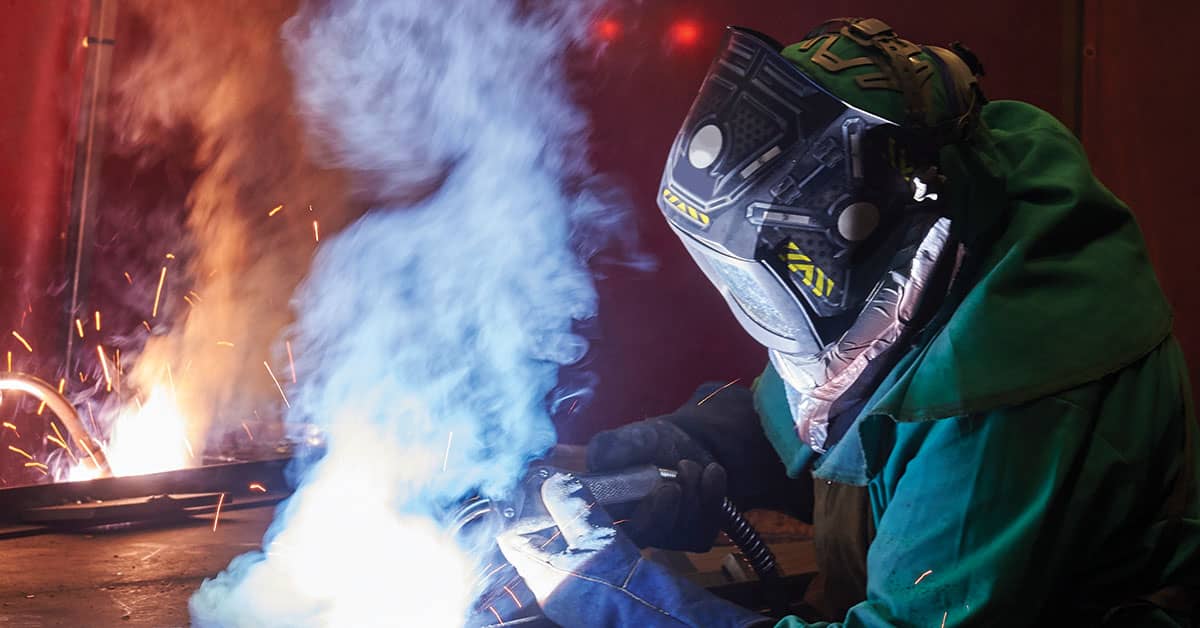Reducing worker exposure to welding fumes
Date Posted: 08/08/2022

Welding produces smoke that contains harmful metal fumes and gas by-products. Although the term “fume” is commonly used as a synonym for a mist or vapor, a fume is actually given off when heating aluminum, chromium, copper, iron, lead, nickel, tin, or other metals. Factors that affect worker exposure to welding fumes include:
- Type of welding
- Base metal and filler metals used
- Welding rod composition
- Location (outside vs. enclosed space)
- Work practices
- Air movement
- Use of ventilation
Acute exposure to welding fumes and gases can result in eye, nose, and throat irritation, as well as dizziness and nausea. Workers who experience these symptoms should leave the area immediately, seek fresh air, and get medical attention. Prolonged exposure may cause lung damage and various types of cancer. Health effects from certain fumes may include metal fume fever, stomach ulcers, kidney damage, and nervous system damage.
Employers should take steps to reduce employee exposure to welding fumes. Examples include:
- Provide training so welders understand the hazards of the materials they work with, which may include Hazard Communication training.
- Clean welding surfaces of any coating that could potentially create toxic exposure, such as solvent residue and paint.
- Train workers to position themselves to avoid breathing welding fumes and gases, such as staying upwind when welding outdoors.
- Use general ventilation to reduce fume and gas levels in the work area. Welding outdoors does not guarantee adequate ventilation. In areas without ventilation and exhaust systems, welders should use natural drafts along with proper positioning to keep fumes and gases away from themselves and other workers.
- Provide local exhaust ventilation systems to remove fumes and gases from the welder’s breathing zone. Keep fume hoods, fume extractor guns, and vacuum nozzles close to the plume source to remove the maximum amount. Position portable or flexible exhaust systems so fumes and gases are drawn away from the welder. Keep exhaust ports away from other workers.
- Consider substituting a lower fume-generating or less toxic welding type or consumable.
If work practices and ventilation do not reduce exposures to safe levels, employers may need to provide respiratory protection.
How Safety Management Suite Can Help
Employees cannot protect themselves from workplace hazards if they haven’t been trained to recognize those hazards, along with training on procedures to mitigate risk. The Training area of the J. J. Keller® SAFETY MANAGEMENT SUITE can help, with courses on many topics to increase employee awareness and involvement. This tool can help you deliver training with interactive online courses, video training, classroom materials, and many other training assets.
E-mail Newsletter
Sign up to receive the weekly EHS Insider email newsletter for safety articles, news headlines, regulatory alerts, industry events, webcasts, and more.